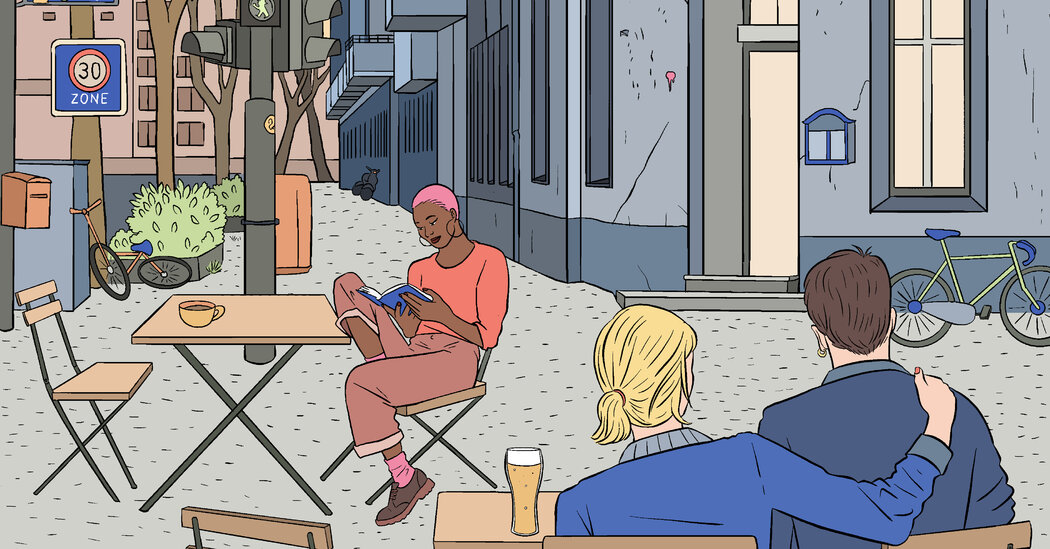This story is part of a new series exploring the world through books. We’ve asked some of our favorite writers to recommend reading that helps you get to know their cities and tips on literary landmarks to check out. We’ll be traveling the world with them for the next few months, from Madrid to Mexico City to Istanbul and beyond. Sign up for the Books newsletter to make sure you don’t miss any stops!
Berlin is not pretty. You should know that beforehand. You don’t come here for the beautiful architecture of an old European city.
The Berlin Cathedral feels oversized. Across the street, there is the absurd Stadtschloss — a castle that was torn down in 1950, replaced by a rather Brutalist building and then recently rebuilt from scratch true to its 19th century facade, with a hyper-modern interior. On Potsdamer Platz, a tent-like glass roof serves as a strange time capsule of what people in the early 1990s thought their future would look like. Just down the road stands the Brandenburg Gate, a neoclassical monument that became a symbol of the new, reunited Germany.
The 20th century has left deep marks on this city. Not too long ago, Berlin was still divided by a wall. And history before the wall was darker still: Watch for the small golden rectangles on the pavement — the Stolpersteine, or stumbling stones — each one carrying the name of a Jewish resident of Berlin killed by the Nazis, and a constant reminder of the people whose children and grandchildren could be living here now. In Berlin, if you know your history, you will find pain on every corner.
But when the weather is nice and you bike from the Neukölln district to Kreuzberg to Friedrichshain to Prenzlauer Berg, the architecture recedes and you will find a sense of freedom in zooming by the endless stretches of cafes and restaurants and parks full of people, speaking so many different languages.
Much of Berlin’s appeal lies in what happens indoors — in its cafes and clubs and within people’s apartments. The city’s grim history has given rise to a search for joy, at times extreme. There is a serious dance and club culture ranging from techno music to Afrobeats, in dance schools and on the streets. The availability of many large spaces after the fall of the wall also resulted in many great artists having a studio in Berlin and therefore in a thriving contemporary art scene. And as for literature, many prominent German-language writers, including those from Austria and Switzerland,…
Click Here to Read the Full Original Article at NYT > Travel…
